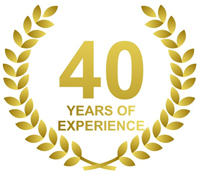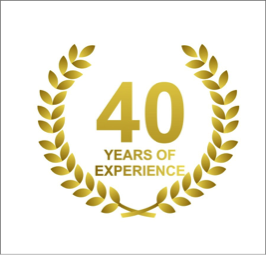This fall I’m celebrating my fortieth year in the senior living industry. Over these forty years, the industry has changed radically. I’ve seen trends come and go, and I’ve observed how three different generations (and their families) approach lifestyle, health care, and decision making in their retirement years.
Most importantly, I’ve seen the principles and practices that endure and create success over the long term.
The long view is extraordinary, and the trajectory for the industry is exciting. There is no doubt that we are at a turning point. Baby Boomers demand an entirely different paradigm for retirement, one of reinvention and renewal, rather than riding off into the sunset.
Boomers are in the midst of exploring Lifestyle Communities, just on the edge of considering Life Plan Communities, and still influencing their parents.
As the industry reinvents itself to embrace this new generation, communities will find success on the solid footing of good consumer research and marketing principles that adapt to changing markets.
Here are four important and enduring lessons from forty years of senior housing marketing.
1. One size does not fit all.
Attracting and enticing Baby boomers has become the holy grail of marketing both for Life Plan Communities and Lifestyle Communities. There is a lot to learn.
This generation is different from generations before. They have different ideas about retirement and there are different tools available to reach them. And, while generations are a powerful ‘clue’ about how to connect with and influence people of different ages, at an individual level everyone is different.
While you must understand as much as you possibly can about them in order to develop a marketing strategy, no singular approach is going to guarantee success right out of the box.
Why? Because no matter how strong or unified the generational identity or how flashy the marketing, this one thing is always true: every marketplace is unique and every person is unique. One size does not fit all.
Your marketplace has its own defining characteristics, challenges, and opportunities. Understanding a market is an art and a science. Along with quantitative data– success comes from ample qualitative information based on solid consumer research.
Online marketing means that our marketing has become faster, more automated, and more data-driven. But, people are not machines now, nor have they ever been. People buy on emotion and validate the decision with facts. They are moved to act by feelings. Our consumer today is moved by feeling valued (having a purpose and being engaged), known, and understood, and by feeling that they have a personal connection. In order to be successful, a community must understand both its unique market and the unique needs and aspirations of its prospects. That brings us to #2…
2. Marketing is impersonal communication. Sales is people – it’s personal.
Marketing backed by reliable research gets the right message about your community to the right demographic. Marketing is a continuous cycle of research, deployment, testing, refining, and re-deployment. Great marketing can attract interest, stir up excitement, and motivate consumers to send an email, pick up the phone, or walk through the door. It does not make the sale.
Once they walk through the door, everything changes. They’re not consumers or demographics anymore. They are people having an emotional and sensory experience. Here, the sales process comes in.
Sales is people. It’s personal. Again, people buy on emotion, then validate the decision with facts. This concept is more important than ever, as we reach out to a population that has been at the center of the consumer universe for their entire lives.
The emotional experience of the prospect is based on the relationships and personal connections that they form during the sales process. Do they feel that they are understood and valued? Does the sales person really listen to them to understand their hopes, dreams, and aspirations for the next phase of their lives, and show them how the community can provide that for them? Can your sales people identify their individual prospects’ emotional obstacles and guide them through? Does the prospect walk out the door feeling worried and overwhelmed about making a move, or hopeful and excited about the promise of life at your community?
Creating a positive emotional experience for prospects requires a nuanced understanding of where they are on every step of the journey. Which brings us to #3…
3. When you “get it,” you “get it” (and not everyone does).
Tools for marketing and communication are very different and more numerous than they were even five and ten years ago. Social media and online marketing give us access to prospects (and give prospects access to our communities) 24/7, and allow for highly targeted, granular marketing.
There are plenty of marketing and digital media experts out there who understand the nuts and bolts of how the tools work, but they often lack understanding of the nuance of marketing to the older generation.. In short, they don’t ’get it’.
Marketing tools are not a marketing strategy, which is why it is so important to have team members who really “get it.”
“Great things are never done by one person. They are done by a team of people.”- Steve Jobs
Your community can learn to use digital media tools. It is far more challenging to learn the unique emotional landscape of the industry and the prospect’s journey. While every prospect will experience it differently (see #2) a keen understanding of their likely process is essential in developing a strategy to reach them.
From Facebook posts to sales coaching, every detail of the marketing and sales process must be infused with a deep understanding of the emotional journey of the prospect. Get it?
4. The best way to predict the future is to invent it.
Henry Ford is known for saying, “If I’d asked customers what they wanted, they would have told me ‘a faster horse.” As Steve Jobs later said, “People don’t know what they want until you show it to them.”
Over the years, I’ve visited hundreds of communities throughout the U.S. and around the world. Some of the most memorable, exciting, and successful communities did not necessarily follow in the path of their competition or industry trends; they color outside the lines.
While they were keen on what was happening in their area or their industry, they went above and beyond and tried things from other industries, or better yet, developed whole new designs and concepts. They may be foreign to the consumer at first, but with perseverance, wonderful successes have come about.
It’s exciting to see how the industry (and the world around us) is constantly changing. Despite some growing pains, communities that stand by the fundamentals of good marketing and sales while embracing new opportunities are reinventing the options in the industry. Their residents are not winding down, they’re engaged and starting over!
And the beat goes on…
As I mark my fortieth year in the senior housing industry, I’d like to take this time to thank my clients, my mentors, my peers, and my associates for the continued confidence and trust placed in me and for their inspiration throughout the years. It has been a privilege and pleasure to be with you. I am incredibly grateful.


